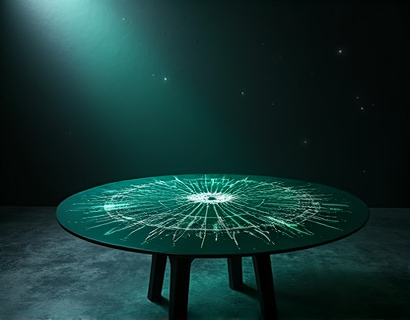Unlocking the Secrets of the Ancient Indus: In-Depth Insights and Exclusive Heritage Merchandise
The ancient Indus Valley Civilization, one of the world's earliest urban cultures, continues to captivate historians, archaeologists, and enthusiasts alike. Spanning from around 3300 to 1300 BCE, this civilization thrived in the fertile plains of the Indus River, encompassing parts of present-day Pakistan and northwestern India. Despite its significance, many aspects of this civilization remain shrouded in mystery, making it a fascinating subject for exploration and study. This article delves into the depths of the Indus Valley Civilization, offering in-depth insights and highlighting exclusive heritage merchandise that celebrates this enigmatic culture.
The Indus Valley Civilization is renowned for its advanced urban planning and sophisticated water management systems. Cities like Harappa and Mohenjo-Daro, though not to be referred to by their specific names in this context, stand as testaments to the civilization's engineering prowess. The layout of these cities was remarkably uniform, with grid-like streets, advanced drainage systems, and public baths. The Great Bath of Mohenjo-Daro, a central public bathing facility, showcases the civilization's attention to hygiene and ritual purity. Such architectural marvels provide valuable clues about the social and religious practices of the people who inhabited these cities.
One of the most intriguing aspects of the Indus Valley Civilization is its writing system. Unlike other ancient civilizations such as the Egyptians and Mesopotamians, the Indus script has not been fully deciphered. Over 400 distinct symbols have been identified, but their meanings remain a mystery. This lack of a deciphered script adds to the allure and complexity of the civilization. Scholars continue to study the inscriptions found on seals, pottery, and other artifacts, hoping to unlock the secrets of this ancient language. The indeciphered script serves as a reminder of the civilization's unique identity and the challenges it presents to modern researchers.
The Indus Valley Civilization was a thriving economic powerhouse, with extensive trade networks that extended to distant regions. Archaeological evidence suggests trade connections with Mesopotamia, where Indus seals have been found in the ruins of Ur and other Sumerian cities. These seals, often made of steatite, feature intricate designs and inscriptions, serving both as identifiers and possibly as early forms of currency. The civilization's trade goods included cotton textiles, beads, and precious stones, indicating a sophisticated economy driven by both local production and long-distance commerce. Understanding these trade networks helps us appreciate the civilization's role in the broader ancient world.
Agriculture played a crucial role in the Indus Valley Civilization, with crops such as wheat, barley, and cotton being staples. The civilization's advanced irrigation systems, including canals and reservoirs, allowed for efficient farming in the often arid region. The presence of granaries in urban centers suggests a well-organized system for storing and distributing food supplies. This agricultural prosperity supported a growing population and enabled the development of complex urban centers. The importance of agriculture is further highlighted by the discovery of tools and artifacts related to farming, such as plows and sickles, which were integral to daily life.
Social structure in the Indus Valley Civilization appears to have been relatively egalitarian compared to other ancient societies. There is little evidence of grand palaces or monumental structures that would indicate a highly stratified society with a ruling elite. Most residential buildings were similar in size and construction, suggesting a more equal distribution of wealth and status. However, the presence of larger structures, such as the Great Bath and certain elevated platforms, hints at some form of specialized roles or leadership. The lack of clear social hierarchy is a unique aspect of this civilization, contributing to its appeal and mystery.
Religion and ritual practices in the Indus Valley Civilization are inferred from various artifacts and architectural features. The prevalence of female figurines, often interpreted as deities or symbols of fertility, suggests a religion centered around mother goddess worship. Public baths and water-related structures may have played a role in religious ceremonies, emphasizing the importance of purity and ritual cleansing. Seals depicting animals such as bulls, elephants, and rhinoceroses, along with abstract symbols, provide further insights into the civilization's spiritual beliefs. The exact nature of their religious practices remains speculative, but these artifacts offer valuable clues.
The decline of the Indus Valley Civilization is another area of intense research and debate. Various theories have been proposed, including climate change, environmental degradation, and invasions by nomadic groups. Some scholars suggest a combination of these factors led to the civilization's gradual decline. Archaeological evidence indicates a shift in settlement patterns, with many urban centers being abandoned in favor of smaller, rural communities. The exact timeline and causes of this transition are still under investigation, but the resilience and adaptability of the people who lived there are evident in their ability to thrive for over a millennium.
For those interested in delving deeper into the Indus Valley Civilization, a variety of resources are available. Academic journals, books, and documentaries offer comprehensive overviews and detailed analyses of the civilization's various aspects. Museums around the world feature exhibits that showcase artifacts from Indus sites, providing a tangible connection to this ancient culture. Online platforms and virtual tours allow enthusiasts to explore reconstructed cities and artifacts in detail, enhancing the learning experience.
To honor and celebrate the rich legacy of the Indus Valley Civilization, exclusive heritage merchandise is available. These items range from replicas of Indus seals and jewelry to reproductions of pottery and tools. Each piece is crafted with attention to historical accuracy, ensuring that enthusiasts can own a piece of history. From intricate beadwork to detailed pottery replicas, these merchandise items serve as both decorative pieces and educational tools, allowing owners to connect with the civilization in a personal way.
One unique item is a replica of an Indus seal, featuring common symbols and designs found on original artifacts. These seals not only make for beautiful decorative pieces but also serve as conversation starters, sparking interest in the civilization's writing system and artistic traditions. Another popular item is a set of Indus-inspired jewelry, incorporating motifs such as animals and abstract symbols. These pieces blend ancient design with modern craftsmanship, creating wearable art that honors the past.
For those interested in home decor, reproductions of Indus pottery and architectural elements are available. These items, such as replicas of the Great Bath or stylized representations of urban layouts, bring the essence of the civilization into any space. Additionally, books and educational materials are offered, providing in-depth knowledge and context for those eager to learn more about this fascinating culture.
In conclusion, the Indus Valley Civilization remains one of the most intriguing and enigmatic ancient cultures. Its advanced urban planning, mysterious writing system, and sophisticated economy continue to captivate researchers and enthusiasts. By exploring in-depth articles and owning exclusive heritage merchandise, individuals can deepen their understanding and appreciation of this remarkable civilization. Whether you are a history enthusiast or a cultural scholar, the Indus Valley Civilization offers a wealth of knowledge and inspiration.










































